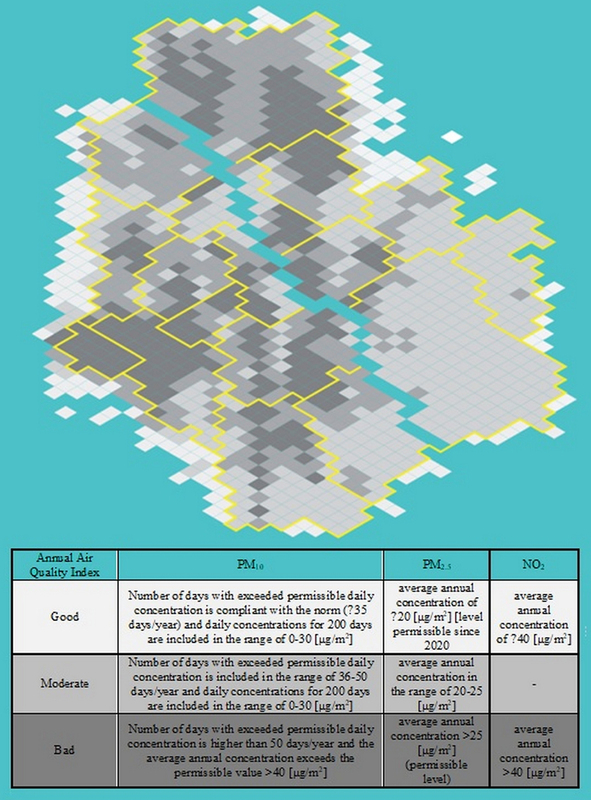Analysis of greenery coverage of the area of the City of Warsaw on the quality of life of residents on the basis of spatial and statistical data
1
The Faculty of Geodesy and Cartography, Warsaw University of Technology, Poland
2
Faculty of Civil Engineering, Warsaw University of Technology, Poland
Submission date: 2023-02-08
Final revision date: 2023-08-07
Acceptance date: 2023-08-17
Publication date: 2024-04-02
Corresponding author
Janusz Sobieraj
Faculty of Civil Engineering, Warsaw University of Technology, Armii Ludowej 16, 00-637, Warsaw, Poland
Faculty of Civil Engineering, Warsaw University of Technology, Armii Ludowej 16, 00-637, Warsaw, Poland
Archives of Civil Engineering 2024;70(1):239-260
KEYWORDS
TOPICS
ABSTRACT
Biologically active areas play an extremely important role in the structure of a city and increasing their coverage, especially in large urban centres, is an activity with a number of advantages. This article compares, in terms of green spaces, two European cities of similar size - Warsaw (517.2km2 ) and Oslo (454km2 ). Both cities are capitals of their respective countries but implement different spatial policies in the scope of the Green Deal. In Warsaw, many industrial and post-industrial areas still exist and simultaneously urban green areas are decreasing year by year. In Oslo, a strategy based on deindustrialisation of the city and possible maximum use of urban greenery and public spaces is implemented. The research described in this article involved analysing the coverage of the analysed cities and their districts with biologically active area and then checking the correlation with other indicators that can be affected by this coverage. These included data on the incidence of the most common diseases among residents, the attractiveness of living for the elderly and families with children, as well as air and soil pollution and the occurrence of negative effects of climate change. The correlation of urban space use in terms of the presence of industrial land in relation to currently existing green spaces in the districts concerned was subsequently determined.
Share
RELATED ARTICLE
We process personal data collected when visiting the website. The function of obtaining information about users and their behavior is carried out by voluntarily entered information in forms and saving cookies in end devices. Data, including cookies, are used to provide services, improve the user experience and to analyze the traffic in accordance with the Privacy policy. Data are also collected and processed by Google Analytics tool (more).
You can change cookies settings in your browser. Restricted use of cookies in the browser configuration may affect some functionalities of the website.
You can change cookies settings in your browser. Restricted use of cookies in the browser configuration may affect some functionalities of the website.




